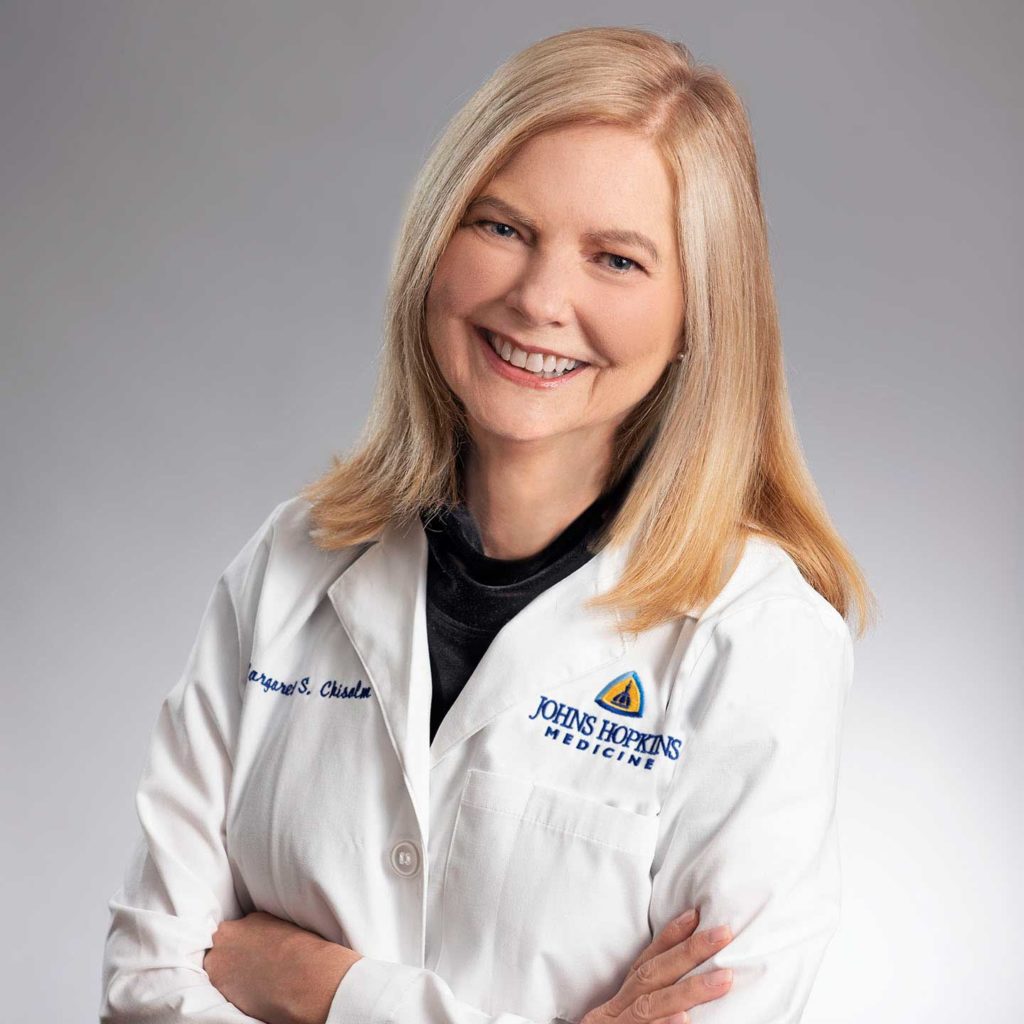Takeaway
For some patients the risk of becoming addicted to prescription opioids is extraordinarily high and may outweigh any pain control benefit.

Lifelong Learning in Clinical Excellence | February 22, 2018 | 3 min read
By Margaret Chisolm, MD, Johns Hopkins Medicine
The opioid crisis
The United States is experiencing an opioid crisis of epidemic proportions. Between 2000 and 2014, there was a 200% increase in the number of opioid-related overdose deaths. And in 2015, 33,091 people died from opioid overdoses. Many of these deaths were caused by prescribed medications like oxycodone and hydrocodone. With these preventable deaths in mind, I shared the story of Ms. B at a recent Miller Coulson Academy of Clinical Excellence Grand Rounds at the Johns Hopkins Bayview Medical Center.
Ms. B’s story illustrates how important it is for clinicians to ask their patients about risk factors for addiction.
Asking questions and listening closely to the patient’s responses are the foundation of clinical reasoning, particularly when it comes to considering the risks, benefits, and alternatives to the use of opioids for pain control.
I first met Ms. B when she came to the Johns Hopkins Center for Addiction and Pregnancy for help with an opioid addiction. She was 24 years young and 28 weeks into her pregnancy, and she didn’t want to continue to buy opioids “off the street” while pregnant.
A family history of addiction
What I remember most about Ms. B was her remarkable family history. Her father and each of her seven half-siblings by this father had developed a substance use disorder (SUD). But Ms. B herself had escaped this fate. She had never used substances as a teen, due to the devastating consequences that she had witnessed first-hand in her family members. (Her father had liver cirrhosis from alcohol dependence, and one half-sibling had died from complications of AIDS related to intravenous drug use.) And, so, Ms. B–unlike all of her siblings–had avoided addiction; that is, until she was prescribed opioids for pain control.
Ms. B was diagnosed with Type I diabetes at age 19 and, by age 21, had developed cervical neuropathy for which she was prescribed gabapentin. Ms. B stopped gabapentin after two weeks due to cognitive side effects and was prescribed oxycodone/acetaminophen 7.5/325 mg up to three times daily.
Not surprisingly, given her family history, Ms. B soon found herself using the medication to “relax” and then began to “lose track” of how many pills was taking each day. To avoid acetaminophen toxicity, her doctor switched her to oxycodone and referred her to a pain specialist who continued prescribed oxycodone, increasing the dosages at each visit.
As expected with addiction, Ms. B found herself running out of pills before her next scheduled doctor’s visit and, thus, experiencing intense withdrawal symptoms. She said, “I became a monster…it almost cost my marriage.” Surprisingly, Ms. B did not recall discussing potential risk factors for addiction–such as her family history–with any clinician. Nor did she recall undergoing any screening for warning signs of addiction.
When she came to the Center for Addiction and Pregnancy, Ms. B told me that she had not sought out treatment previously, in part, because she was using a prescribed medication: “I didn’t really think that I was a drug addict….” When Ms. B became aware of her pregnancy, she was taking ~130 mg of oxycodone daily, all of which was clinician-prescribed. To avoid opioid withdrawal in herself and her unborn child, she started illicitly purchasing buprenorphine, the recognition of which was a “red flag” of addiction and compelled her to seek treatment.
Lessons learned
Through her story, Ms. B hopes to teach practitioners two ways to be more clinically excellent.
First, while recognizing that opioids can be highly effective for pain relief, Ms. B wants clinicians to understand that–for some patients–the risk of becoming addicted to these medications is extraordinarily high and may outweigh any pain control benefit.
Factors that increase the risk of addiction include personal history of substance use and family history of SUD. For patients with these risk factors, clinicians need to discuss with them the risks, benefits, and potentially effective alternative options for pain control.
Second, Ms. B wants clinicians to see that it is necessary to take a thorough personal and family history with each patient in order to identify these risk factors.
Ms. B’s case underscores the foundational role of careful data gathering in clinical excellence. Knowing a patient’s personal history of substance use and family history of SUD allows a clinician to enter into a discussion with each patient about the evidence base regarding risk factors for addiction and enter into shared-decision making with that patient around the specific risks, benefits, and alternatives to opioid medications for her/him.
To read Ms. B’s full case report, published with her written consent, see “Putting a face on the prescription opioid epidemic.”

